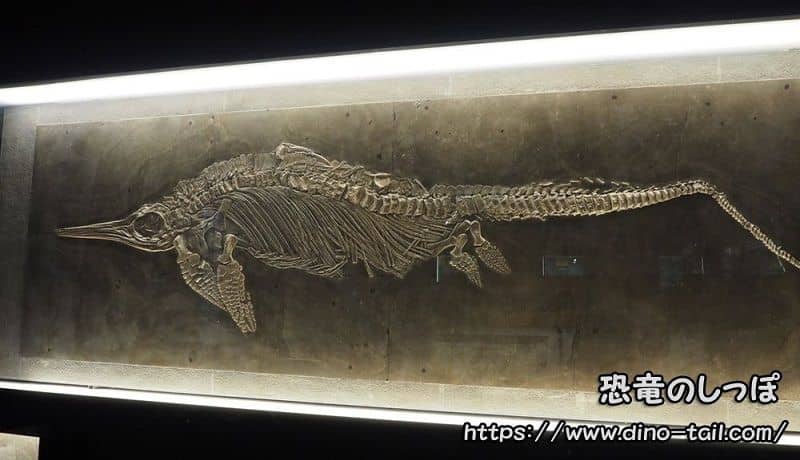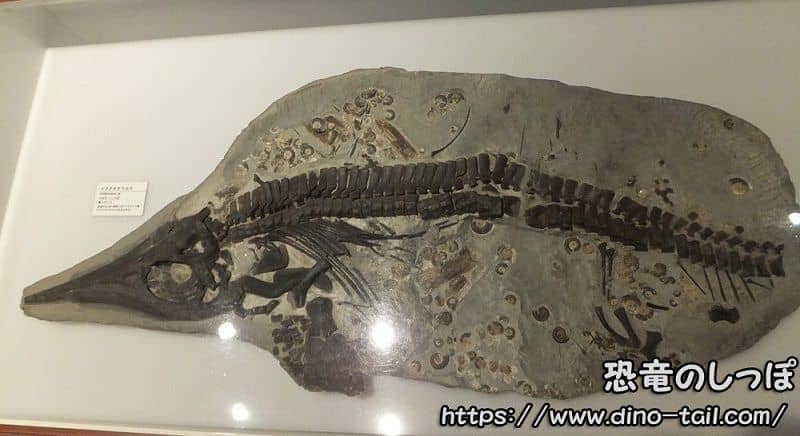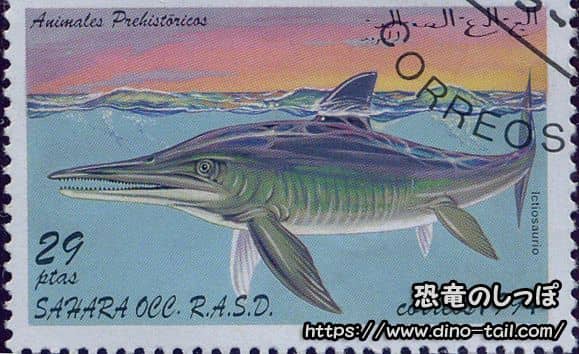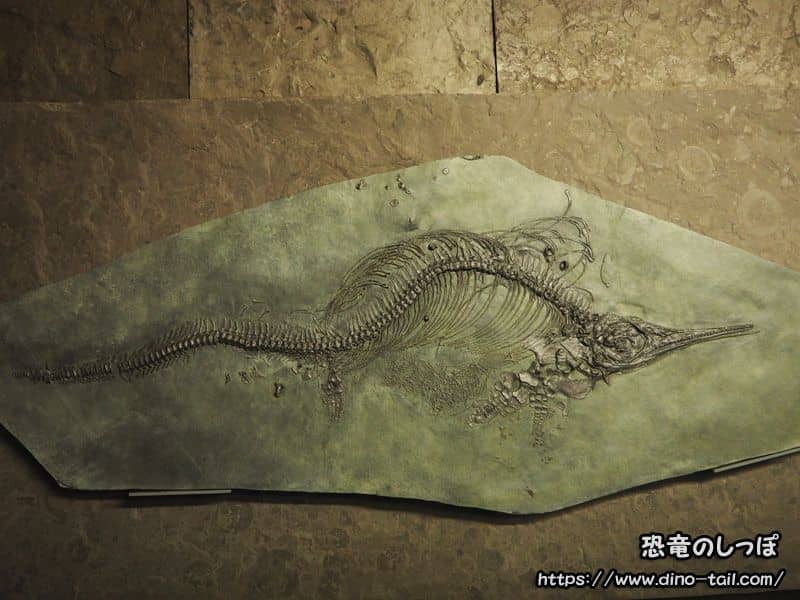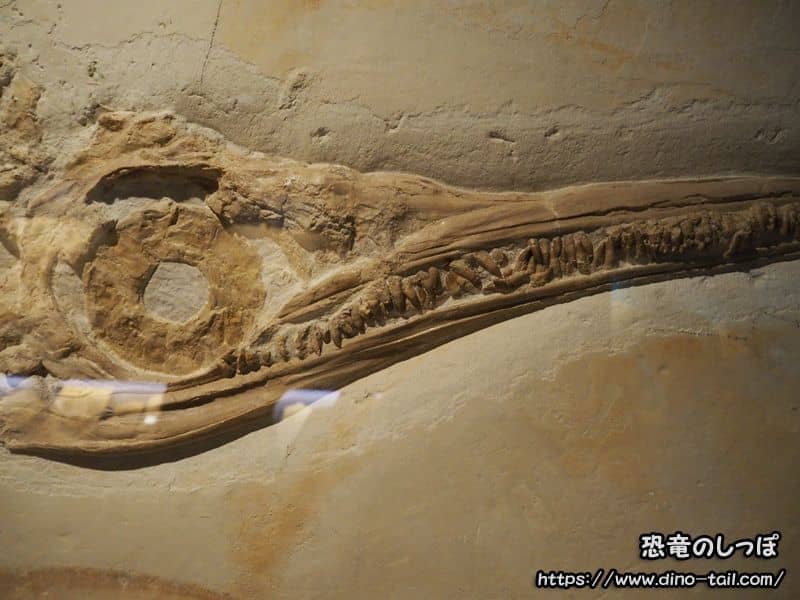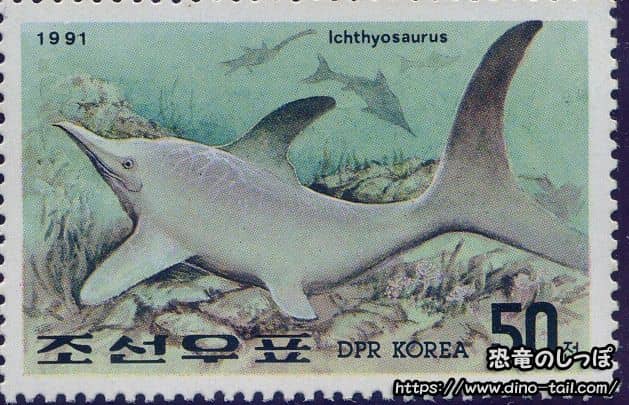About Ichthyosaurus (Ichthyosaur)
| Scientific Name (Genus) | Ichthyosaurus |
| Meaning of Name |
Fish-like lizard (reptile)
ichtys (fish-like) [Greek] - sauros (lizard) [Greek] |
| Classification | Ichthyosauria, Ichthyosauridae |
| Total Length | Approx. 3m |
| Diet | Carnivorous (fish, squid, etc.) |
| Period | Late Triassic - Early Jurassic |
| Sub-classification / Species Name |
Ichthyosaurus communis
Ichthyosaurus breviceps Ichthyosaurus conybeari Ichthyosaurus intermedius Ichthyosaurus anningae Ichthyosaurus somersetensis |
| Year of Paper Publication | 1821 |
Features
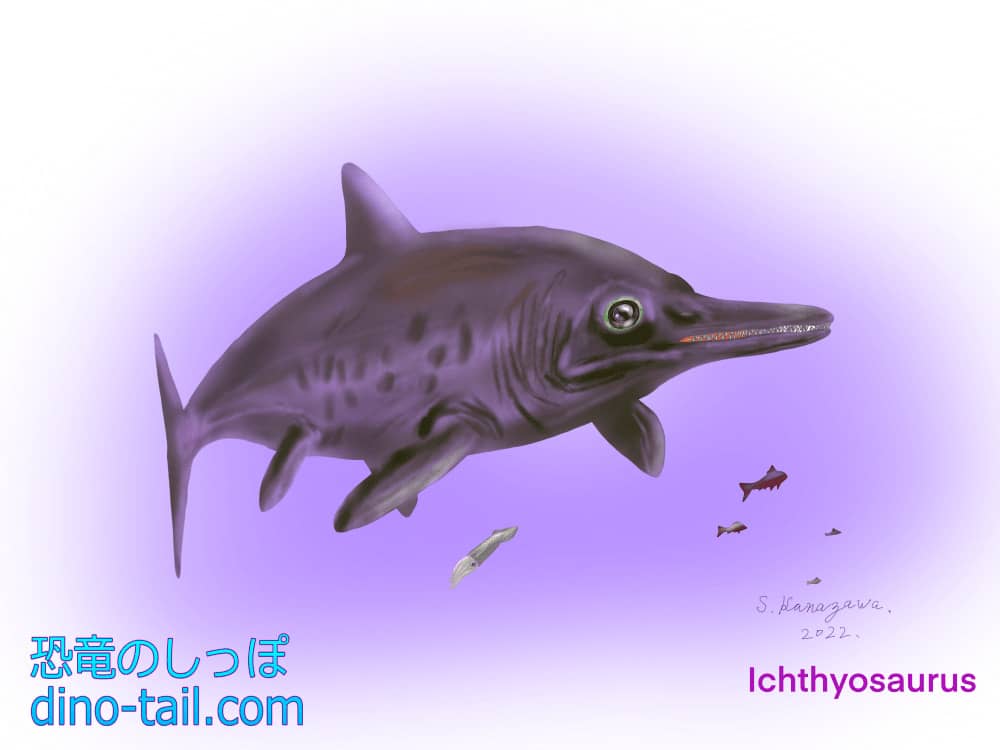
Ichthyosaurus was an ichthyosaur that flourished in seas worldwide from the Late Triassic to the Early Jurassic. It reached a total length of about 3 meters and was a reptile highly adapted to marine life, with a streamlined body shape very similar to that of modern dolphins.
One of its most striking features was its disproportionately huge eyes . These eyes are thought to have been very useful for finding prey in the deep sea where light is scarce, or during nighttime hunting. Also, its hard ear bones functioned as a sensitive sonar to detect minute vibrations in the water, and together with its huge eyes, made them very effective hunters.
There are no bones in its dorsal fin. When Ichthyosaurus was first described, it was reconstructed "without a dorsal fin," but later, fossils with preserved fleshy impressions of the dorsal fin were excavated, and it began to be depicted with a dorsal fin.
Several slab fossils of Ichthyosaurus and other ichthyosaurs have been found that seem to capture a birth scene, revealing that they were ovoviviparous (hatching eggs inside the mother's body and giving birth to live young) . Their tail fins were well-developed so they could swim on their own immediately after birth.
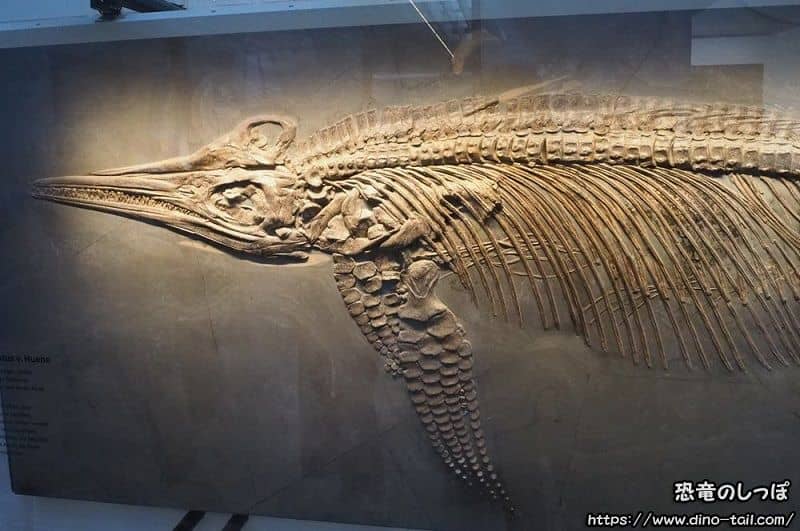
Warm-Blooded? The Truth Revealed by Amazing Soft Tissue
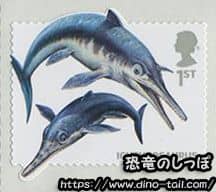
For many years, Ichthyosaurus was thought to be a cold-blooded "reptile." However, in 2018, a study of an amazing fossil was published that overturned this conventional wisdom.
A fossil of Stenopterygius, a very close relative of Ichthyosaurus, discovered in Germany, had its skin and underlying tissues preserved in almost perfect condition. Analysis of this fossil revealed some surprising facts.
- Discovery of Blubber: A thick layer of subcutaneous fat with the exact same cellular structure as that found in modern whales, dolphins, and penguins was discovered under the skin. This is a powerful insulator to prevent body heat from escaping to the outside and is very strong evidence that Ichthyosaurus was a "warm-blooded" animal that generated its own heat.
- Identification of True Body Color: Analysis of pigment cells (melanosomes) remaining in the skin revealed that their body color was "countershaded," dark on the back and light on the belly. This is a camouflage to eliminate the shadow cast by sunlight in the water, making it harder to be seen by prey and enemies.
These discoveries have revealed that Ichthyosaurus was not just similar to dolphins in shape, but that its physiological functions were also surprisingly similar to those of modern warm-blooded marine mammals. This can be called a prime example of "convergent evolution."
Fossil Collector Mary Anning
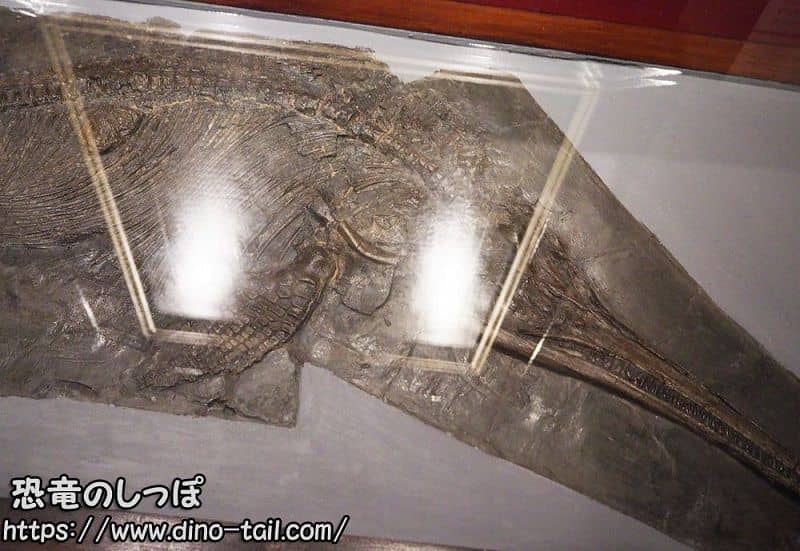
Housed at the Natural History Museum, London
(Exhibited at the "Treasures of the Natural World" exhibition at the National Museum of Nature and Science, Tokyo in 2017)
Mary Anning, a famous British fossil collector and dealer. The complete skeleton of an Ichthyosaurus she excavated in 1823 made her famous.
In 1811, Joseph Anning discovered the skull fossil of an ichthyosaur in Dorset, England. This was the world's first discovery of an Ichthyosaurus. The following year, in 1812, the other parts were discovered by Joseph Anning's sister, Mary Anning (then 12 years old) (this specimen is now housed at the Doncaster Museum and Art Gallery in South Yorkshire, England, and has been given the species name "Ichthyosaurus anningae" in honor of its discoverer).
In 1821, British paleontologists Henry De la Beche & William Conybeare described Ichthyosaurus as a new genus in a paper. This was based on a different type specimen from the one excavated by the Anning siblings.
In 1823, Mary Anning discovered the most famous skeleton of Ichthyosaurus (ichthyosaurus communis). This specimen, in amazing condition, is housed at the Natural History Museum, London.
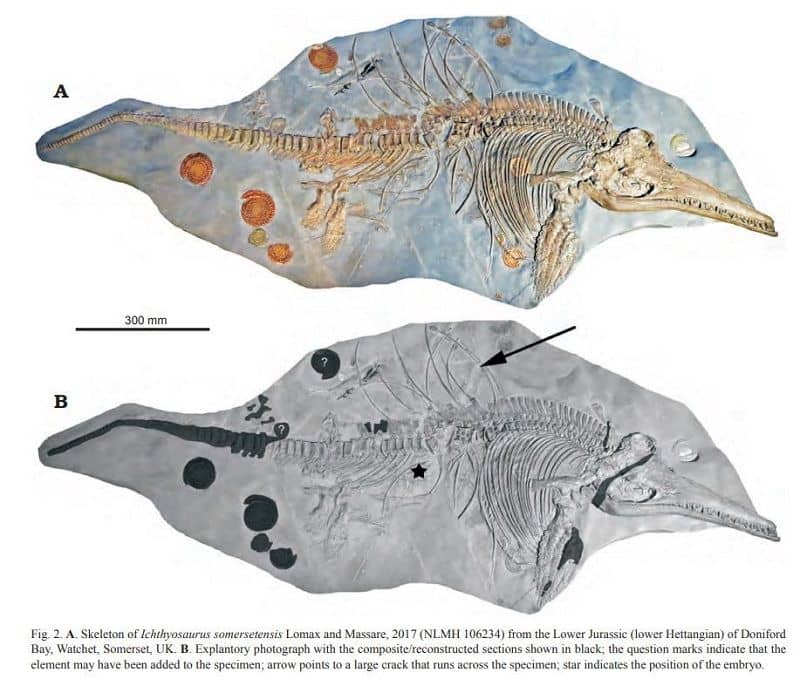
Source: On the largest Ichthyosaurus: A new specimen of Ichthyosaurus somersetensis containing an embryo.
Acta Palaeontol. Pol. 62.
by Dean R. Lomax and Sven Sachs.
Ichthyosaurus Stamp and Fossil Gallery
